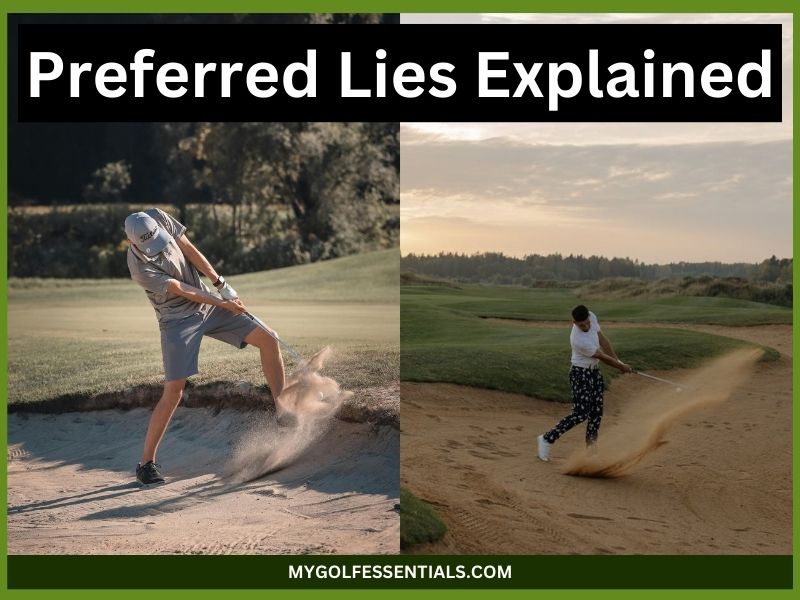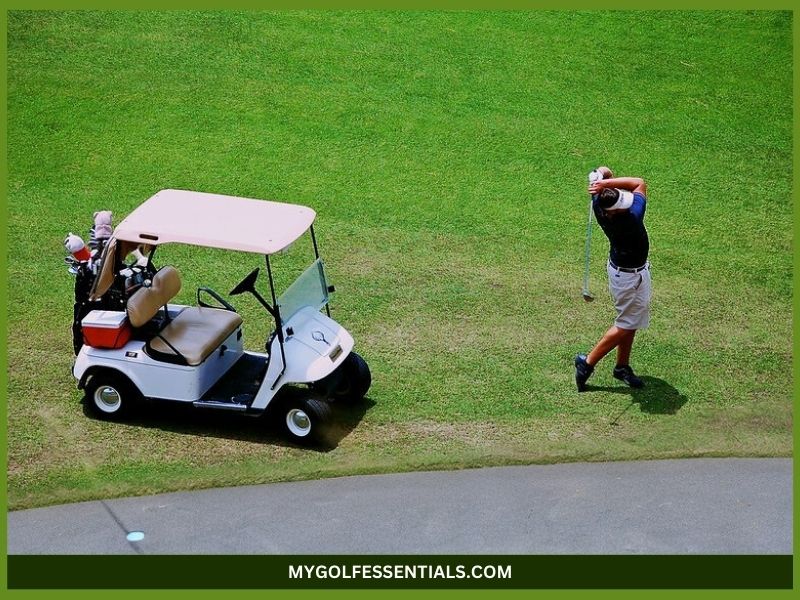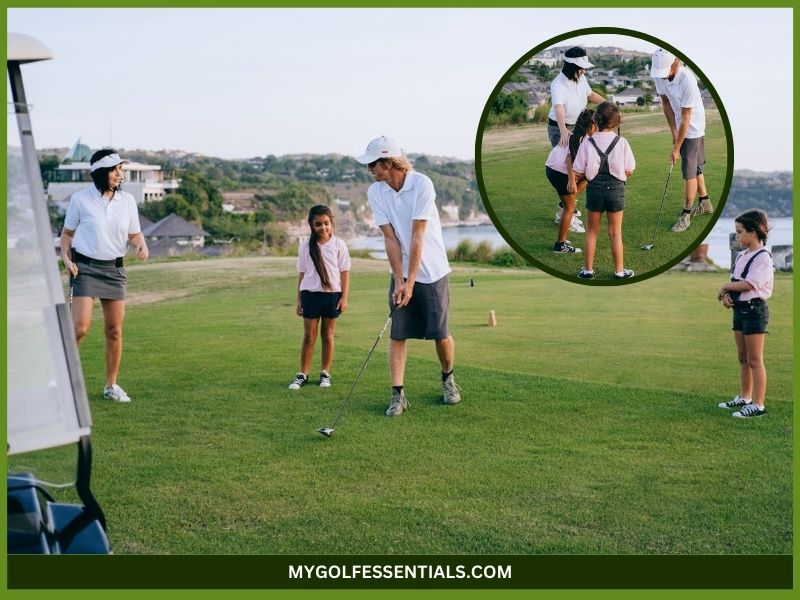
In golf, many players often lean on a few common beliefs, known as “preferred lies,” that can affect how they play the game. While these ideas might seem harmless, they can shape our approach and confidence on the course.
In this article, we’ll break down what preferred lies are and how they can influence your golf game. In order to understand these concepts, it doesn’t matter whether you’re a seasoned player or just starting out. Whatever the case, this guide will help you understand these concepts in order to avoid playing according to wrong myths.
So, without further ado, let’s read on and discover how understanding these myths can help you improve your performance and enjoy the game more!
What Are Preferred Lies?
Preferred lies, often referred to as “lift, clean, and place,” are rules in golf that allow players to improve the position of their ball in certain situations.
Suppose a golfer finds their ball in a difficult position(like in muddy ground, in a divot, or in thick grass). Then, they are allowed to pick it up, clean it off, and then place it back down in a better position.
However, remember that you need to keep this new position typically within one club length from where the ball originally lay and must be on the same type of ground.
When is a preferred lie used?
- Course Conditions: They are used when the ground conditions are poor, such as after heavy rain, when the fairways are muddy, or in winter months when grass growth is limited.
- To Maintain Fairness: The rule helps ensure that players are not penalized for unfavorable lies that are due to course conditions rather than skill.
Rules and Regulations That You Need To Aware Of Regard To Preferred Lies
Model Local Rule E-3 is a guideline established by the Rules of Golf that allows for the use of preferred lies in specific situations. This rule enables golf course committees to implement the “lift, clean, and place” policy to help improve playing conditions for golfers.
When this rule is in effect, players can benefit from the ability to reposition their ball to avoid challenging lies. Thus making the game fairer and more enjoyable, especially in adverse conditions.
Specifics on Lifting, Cleaning, and Placing the Ball
Under Local Rule E-3, when preferred lies are in effect, a golfer is allowed to lift their ball from the ground, clean it, and then place it back down.
However, the player must ensure that the ball is replaced on a spot that is free from interference from any obstacles that could affect the shot. This process is intended to provide golfers with a better chance of making a good play without being hindered by poor lies caused by the course conditions.
Distance Limitations
When placing the ball, the distance limitations set forth by Model Local Rule E-3 typically allow the golfer to move the ball up to 6 inches (or one club length) from its original spot. Keep in mind that the ball must be placed within this distance and on the same type of surface (e.g., if the ball was in the rough, it must be placed back in the rough).
Conditions Under Which Preferred Lies Apply
Preferred lies may be applied under various conditions, including:
- Wet Weather: When the course is soggy or muddy, making it difficult to play from those areas.
- Course Maintenance: During periods when the course is being worked on, such as aeration or reseeding.
- General Poor Conditions: In situations where the ground is excessively hard or soft, causing potential issues with playability.
As you can see, it will be better for you to always check with the golf course officials or the local golf rules, before starting your round in order to verify whether the preferred lies are in effect. This approach will significantly impact your strategy and performance on the course.
Steps You Could Follow to Take a Preferred Lie Chance Properly
When preferred lies are in effect, it’s important to follow the correct procedures to ensure fair play and compliance with the rules. Here are the steps to properly take a preferred lie:
1. Mark the Ball’s Position Before Lifting
Before lifting your ball, it is crucial to mark its exact position on the ground. This can be done using a small coin, a tee, or any other identifiable marker. Hare, marking the position helps ensure that you can accurately replace the ball later, adhering to the rules of the game.
2. Lifting and Cleaning the Ball.
Once the ball’s position is marked, carefully lift the ball from the ground. You may clean the ball with a towel or your hand, removing any dirt, mud, or grass.
Furthermore, cleaning the ball can help improve your ability to play your next shot, as a clean ball will have better contact with the club.
3. Placing the Ball Within the Allowed Area
After cleaning, you must place the ball back on the ground. According to the guidelines of preferred lies, you can place the ball within the specified distance, usually up to 6 inches (or one club length) from the original marked position. Make sure to place it on the same type of surface (e.g., if the ball was in the rough, it must be placed back in the rough).
When placing the ball, ensure it is not in a position that would create an unfair advantage or cause interference from obstacles.
By following these steps, you can correctly take a preferred lie, ensuring compliance with the rules while enhancing your playing experience on the course. Always remember to check with local course regulations to confirm that preferred lies are in effect before starting your round.
Common Misunderstandings and Mistakes
It’s important to understand and correctly apply preferred lies, as it can be tricky, leading to some common errors among golfers. Here are some typical mistakes and misunderstandings, along with the penalties that may arise from them:
- Not Marking the Ball’s Position: One of the most frequent mistakes is failing to mark the ball’s position before lifting it. This can lead to confusion about where the ball should be replaced. If a golfer cannot accurately return the ball to its original spot, they may inadvertently violate the rules.
- Lifting the Ball Without Justification: Some golfers may lift their ball without realizing that preferred lies only apply under specific conditions (e.g., wet ground or course maintenance). Lifting the ball when preferred lies are not in effect is a misunderstanding that can lead to penalties.
- Incorrect Placement of the Ball: Golfers may mistakenly place the ball outside the allowed distance or on a different type of surface than the one it was originally on. For example, placing the ball on the fairway when it was originally in the rough violates the rules of preferred lies.
- Cleaning the Ball After Placing It: Once the ball has been placed back on the ground, golfers should not clean it again. Cleaning the ball after it has been placed can be seen as an improper procedure, as the ball should only be cleaned before being replaced.
Penalties Associated with Incorrect Procedures
Golfers who do not adhere to the proper procedures when applying preferred lies may face penalties. These penalties can include:
- General Penalty: If a golfer lifts the ball without justification or places it incorrectly, they may incur a general penalty of two strokes in stroke play or loss of hole in match play.
- Disqualification: In severe cases, particularly when a golfer intentionally disregards the rules or fails to comply with the necessary procedures repeatedly, disqualification from the round or event may occur.
To avoid these common misunderstandings and mistakes, golfers should familiarize themselves with the rules regarding preferred lies and always verify if the local rule is in effect before starting their round. By doing so, they can ensure they play fairly and enjoy the game to its fullest.
How Preferred Lies Affect Scoring and Strategy
Preferred lies can significantly influence both scoring and overall strategy during a round of golf. By allowing golfers to lift, clean, and place their balls in better positions, these rules can lead to improved scoring opportunities.
Here are some key ways preferred lies impact gameplay:
- Improves Shot Quality: By allowing players to place their balls in more favorable spots, preferred lies help reduce the risk of poor lies caused by adverse course conditions. This often results in better contact with the club and more accurate shots, ultimately leading to lower scores.
- Increases Confidence: Knowing that they can adjust the position of their ball provides golfers with greater confidence when making their shots. This psychological boost can positively impact a player’s performance throughout the round.
- Helps Strategic Decisions: Preferred lies allow golfers to adapt their strategies based on course conditions. Players may choose to be more aggressive with their shots, knowing they have the option to improve their lies if they land in less-than-ideal positions.
Advantages of Using Preferred Lies
- Enhanced Playability: Preferred lies make the game more enjoyable by providing relief from difficult lies, allowing for a smoother and fairer playing experience.
- Reduced Frustration: Golfers can avoid the frustration of playing from challenging spots, leading to a more relaxed and positive mindset during the round.
- Better Scoring Potential: The ability to improve ball position can lead to lower scores, making preferred lies particularly advantageous for players looking to improve their performance.
Disadvantages of Using Preferred Lies
- False Sense of Security: Relying too heavily on preferred lies may lead some golfers to underestimate the importance of skill and technique, potentially hampering their overall development as players.
- Changes in Strategy: Some players may alter their strategies based on the assumption that preferred lies will always be available, which may not be the case in every round or on different courses.
- Impact on Course Conditions: If preferred lies are used too frequently, it may lead to players not fully adapting to the natural conditions of the course, affecting their ability to handle challenging situations in the future.
Keep in mind that while preferred lies can enhance playability and scoring potential, they also have certain drawbacks that golfers should consider. In the meantime, balancing the benefits with a focus on skill development and adaptability can lead to a more well-rounded game.
Final Thoughts
Understanding preferred lies and how they affect your golf game can really help you enjoy your time on the course. Knowing when and how to use these rules can improve your play, especially in tough conditions. It’s important to follow the correct steps to avoid mistakes that could lead to penalties.
Preferred lies have both good and bad points, so finding the right balance is important. By learning about these concepts, you can make the game more enjoyable and also work on your skills to handle different course conditions.
As you head out for your next round, keep these tips in mind to help you play better and enjoy the game more. Happy golfing!
Key Points
- Preferred lies, also known as “lift, clean, and place,” allow golfers to improve the position of their ball under certain conditions.
- These rules are typically applied during wet weather, course maintenance, or other situations that make the ground difficult to play from.
- Model Local Rule E-3 permits the use of preferred lies, allowing players to lift and reposition their balls for better playability.
- When taking a preferred lie, golfers can usually move the ball up to 6 inches or one club length from its original spot.
- Players should mark the ball’s position before lifting it, clean it, and then place it back within the allowed distance.
- Typical errors include failing to mark the ball’s position, lifting the ball without justification, and incorrect placement on different surfaces.
- Not following the proper procedures can lead to penalties, including two strokes in stroke play or loss of hole in match play.
- Preferred lies can improve shot quality and increase confidence, leading to better scoring opportunities.
- Knowing you can improve your lie allows for more aggressive shot strategies, adapting to course conditions.
- While preferred lies can enhance playability, relying on them too much can lead to a false sense of security and hinder skill development.
FAQs
Are there any restrictions on preferred lies?
Yes, players must adhere to the designated area rules and cannot exceed the specified distance. Additionally, once the ball is placed, players must play it as it lies, considering any hazards present.
What should players keep in mind when using preferred lies?
Players should use this rule responsibly, ensuring they only take advantage of preferred lies when allowed and not moving their ball outside the designated area.
Can I use preferred lies in casual play?
While preferred lies are often associated with tournaments and poor course conditions, they can also be used in casual rounds if all players agree to it.
Do preferred lies affect scoring?
Yes, by allowing a more favorable ball position, preferred lies can potentially lead to lower scores as golfers are more likely to make solid contact with the ball.
Is taking a preferred lie considered cheating?
No, using a preferred lie when allowed is within the rules of golf. It is designed to promote fair play under challenging conditions.
Who decides when preferred lies are in effect?
The decision to implement preferred lies is typically made by course officials or tournament directors, who assess the condition of the course.



